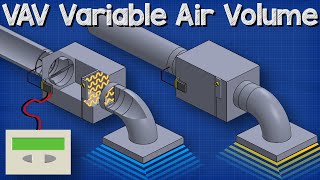Variable air volume (VAV) systems are a type of HVAC system that can provide both heating and cooling. They are becoming increasingly popular in commercial buildings, as they are energy-efficient, cost-effective, and easy to install and maintain. In this article, we'll explore how VAV systems work, their benefits, and how they can be used in commercial buildings.
What Is a Variable Air Volume System?
A VAV system is a type of HVAC system that uses a variable air volume box to control the air flow in a building. The box is usually connected to a ductwork system and can regulate the temperature and air flow in the building. The air volume box can be manual, motorized, or pneumatic and is used to adjust the amount of air that is circulated in the building.
How Does a Variable Air Volume System Work?
A VAV system works by controlling the air flow in a building. It does this by using a variable air volume box, which is connected to the ductwork system. The box can be adjusted to increase or decrease the amount of air that is circulated in the building. This allows the system to regulate the temperature and air flow in the building, depending on the needs of its occupants.
Benefits of Variable Air Volume Systems
There are several benefits that a VAV system can provide to commercial buildings. Firstly, they are energy-efficient, as they can be adjusted to meet the needs of the building's occupants. This can help to reduce energy costs and improve the efficiency of the system.
Secondly, VAV systems are also cost-effective, as they are relatively inexpensive to install and maintain. They are also easy to operate and require little to no maintenance.
Lastly, VAV systems are also effective at controlling the air flow in a building. This can help to control the noise levels in a building, improve air quality, and reduce the spread of airborne diseases.
Conclusion
In conclusion, VAV systems are a type of HVAC system that can provide both heating and cooling. They can be used to improve the efficiency of a building's HVAC system, reduce energy costs, and improve the air quality and noise levels in the building

